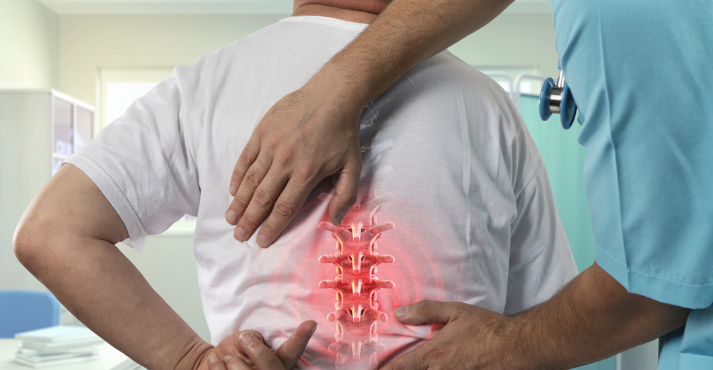Musculoskeletal pain refers to discomfort or pain affecting the bones, muscles, ligaments, tendons, and joints. It can arise from injury, overuse, degenerative conditions, or systemic diseases and is one of the most common reasons for doctor visits worldwide. Effective pain management is crucial to reduce discomfort, restore function, and improve quality of life.
Pain from musculoskeletal conditions can be acute (short-term) or chronic (lasting more than 3 months), and management must be holistic, individualized, and multi-modal—addressing not just the pain but its root cause.
Common Musculoskeletal Conditions Causing Pain
- Osteoarthritis
- Rheumatoid arthritis
- Back and neck pain (disc problems, spinal stenosis, muscular strain)
- Frozen shoulder
- Tendonitis or bursitis
- Fibromyalgia
- Fractures and dislocations
- Muscle sprains and ligament injuries
- Post-surgical pain after joint replacement or fracture fixation
Multimodal Approach to Pain Management
1. Medications
Analgesics (Pain Relievers):
- Paracetamol (Acetaminophen) – Safe first-line option for mild pain
- NSAIDs – Ibuprofen, Naproxen, Diclofenac for pain with inflammation
- Topical NSAIDs or Capsaicin Cream – For localized joint or muscle pain
- Muscle Relaxants – For spasms and acute muscular pain
- Opioids – Used cautiously in severe cases or post-operatively
For Chronic Conditions:
- Duloxetine or Pregabalin – Especially useful in fibromyalgia or nerve-related pain
- Steroids – Used judiciously to reduce inflammation (oral or injectable)
2. Injections & Interventional Procedures
- Corticosteroid Injections – For joint inflammation (e.g., knees, shoulders, spine)
- Hyaluronic Acid Injections – For joint lubrication in osteoarthritis
- Trigger Point Injections – For localized muscle pain
- Nerve Blocks – For severe or neuropathic pain
- Platelet-Rich Plasma (PRP) – Promotes healing in tendon and ligament injuries
- Radiofrequency Ablation – Used in chronic back or neck pain
3. Physical Therapy & Exercise
- Supervised physiotherapy improves flexibility, strength, and endurance
- Techniques include:
- Manual therapy
- Therapeutic exercises
- Posture correction
- Taping or bracing for joint support
- Helps reduce dependence on medication and prevents recurrence
4. Lifestyle Modifications
- Weight management – Reduces stress on joints, especially knees and hips
- Ergonomic adjustments – For workspaces, sleeping posture, and daily activities
- Regular low-impact exercise – Swimming, walking, yoga
- Smoking cessation – Improves tissue healing and reduces inflammation
- Balanced diet – Rich in anti-inflammatory foods, calcium, and vitamin D
5. Alternative and Supportive Therapies
- Acupuncture – Stimulates healing and pain relief through nerve pathways
- Chiropractic care – For spinal alignment and posture
- Massage therapy – Reduces muscle tension and promotes circulation
- Mind-body approaches – Meditation, deep breathing, and relaxation techniques
- Cognitive Behavioral Therapy (CBT) – Helps manage chronic pain perception and anxiety
6. Assistive Devices
- Orthotics, braces, and splints – Provide support and reduce strain
- Canes or walkers – Improve mobility and reduce fall risk
- Custom shoes or inserts – For foot pain and posture alignment
Patient Education & Self-Management
Empowering patients to understand their condition is key to long-term success. This includes:
- Understanding pain triggers and activity pacing
- Knowing when to rest vs. when to move
- Recognizing early warning signs of flare-ups
- Adhering to exercise routines and medication schedules
- Following up regularly with healthcare providers






